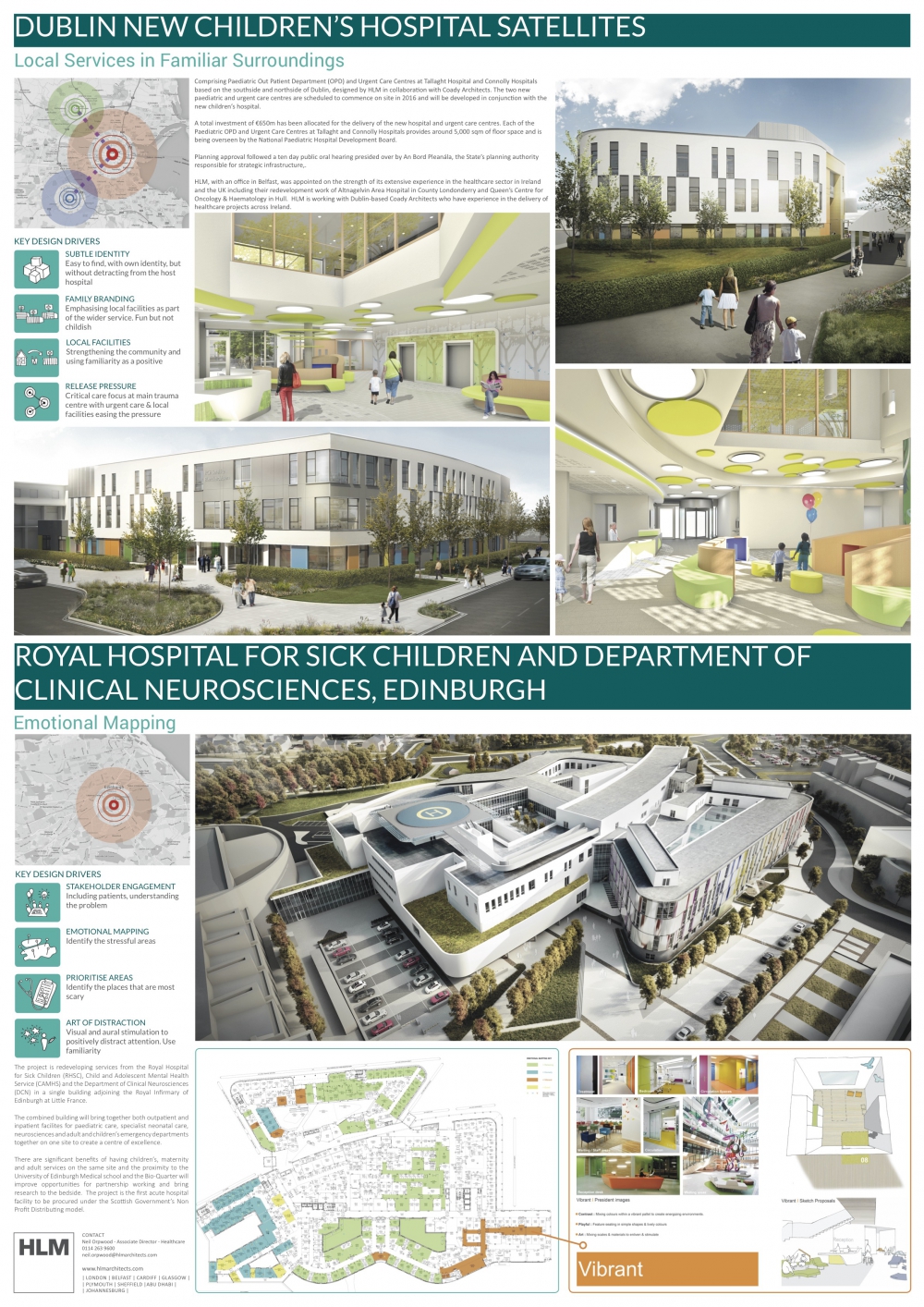Healthcare / Facilities design
European Healthcare Design 2016
Children’s hospital experiences
By Neil Orpwood | 03 Aug 2016 | 0
Arguably, there is nowhere more important to get it right in healthcare than in a department that not only provides treatment for the youngest and most vulnerable of society but also where parents and carers are perhaps even more stressed than they would be if it were they who were unwell.
Abstract
It’s important for children to have a strong health education programme at school, raising awareness of their wellbeing and their ability to directly affect health through behaviour and personal choices.
One of the best ways we could help children become less afraid of hospitals would be to teach them how to use the facilities. Field trips, school visits and experiences all contribute to removing the fear of the unknown and de-stressing the experience for when actual enforced visits might be required. If they understood the most appropriate place to get help when it is needed, and knew what to expect when they arrived, not only would children be better equipped to cope with their own hospital visits but they would also be better able to help staff, their parents and carers when we need to use the NHS.
It doesn’t take countless studies to evidence the importance of communication in maintaining a stress-free treatment pathway. This is especially true in paediatric care, where parents and carers must be kept sufficiently informed to assist in the calming of the patient.
Adult waiting rooms are generally now far removed from the airportstyle rows of chairs, and more closely resemble hotel lobbies in some of the better facilities. But in paediatric units, there exists the opportunity to use technology and allow outpatient clinics the freedom to let patients sit in the café while waiting, pop to the shop, or play under cover in a courtyard, before being summoned by pager or text message – all things that help support positive distraction.
An excellent way to achieve this within high-acuity environments has been used at Great Ormond Street in the journey to theatre. Here, the artist has developed full-size feature walls of silver birch glades, difficult to distinguish with the naked eye and hiding moving digital creatures that can be pointed out by parents and carers – helping take minds away from the anticipation of scary surgical procedures.

Organisations involved

